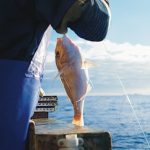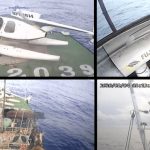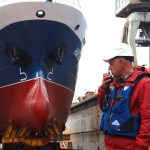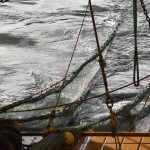We know that Round 3 is expected to generate around 25 gigawatts of power, as against Round two which when complete, will generate around 7 gigawatts. The impact of fishing can therefore be expected to be commensurably larger. As owners of the seabed, the Crown Estate has an important influence on the process of selecting the location and shaping the boundaries of future wind-farms.
The meeting provided an opportunity for the Federation to raise the industry’s concerns:
The first two rounds had conspicuously failed to take the fishing industry’s concerns into account. A clear example was the siting of a proposed wind-farm directly on top of the most lucrative lobster ground in the country
This approach contrasts dismally with the highly collaborative relationship between the fishing and offshore oil and gas industries, that has seen constructive coexistence between the two industries over 25 years, despite massive offshore developments
The body charged with overseeing the development of relations between the fishing and the renewable energy sector (FLOWW) has been a disappointment and failed to make any real impact
There has been minimal attempt to integrate fisheries information (where vessels operate, what they catch, where are the most critically important areas) into the early planning stages. This means that the fishing industry is always placed on the back foot, reacting to proposals that threaten specific fisheries
Crown Estates by jumping the gun and proposing indicative areas for potential wind-farm development have undermined the Strategic Environmental Assessment that, in the absence of a full marine spatial planning process, is supposed to guide decisions on wind-farm location
Our two principal concerns over offshore wind farms arise from the effect of potential displacement of fishing activity. This can have a direct impact, leading to a loss of economic viability for vessels, fishing businesses, and even communities. It can also have a broader impact as displaced vessels are forced into other areas, where they may have to compete with other fishermen. Vessels of limited range obviously have fewer options.
The indicative areas for Round 3 wind-farms (See NFFO Website Regional Notice-boards) are huge, although we are advised that the eventual size of the wind-farms will only occupy a fraction of this zone. Crown Estate reasons that providing indicative areas then negotiating the terms of the contracts with wind-farm developers will give the Estate more control and direction over the process. The overall area of the indicative zones covered by turbines should not exceed 10%. This leaves open the question of how much of a single indicative area may be covered by wind-farms. This is a critical question for the fishing industry and to date we have not heard the safeguards that would give us comfort.
The importance of recognising that fishing patterns can change, sometimes quite radically, over time.
Crown Estates appeared to understand and accept the shortcomings of the approach used to date and has invested in a computer-based Geographic Information System (Marine Resource System, MaRS) which weight different layers of marine activities as part of the planning system.
Although this is a powerful planning tool it is also very apparent that it faces serious difficulties in representing the realities of fishing patterns. It is over-reliant on VMS data, and as to date satellite monitoring only covers the over 15 metre fleet, this can only lead to a distorted and seriously misleading picture unless the data is interpreted carefully.
It is clear that there is a need for the fishing industry to prepare comprehensive charts to defend key fishing areas, not just against badly designed wind-farms but also marine conservation zones (MCZs) and aggregate dredging applications. At present the information that is available is very patchy and the challenge is for the industry to prepare authoritative charts with sufficient detail and at the right scale.
A Way Forward
Against this background the Crown Estate and the NFFO agreed:
To work collaboratively to dramatically improve the quality of data on fishing patterns on the Crown Estate information systems. This should highlight red areas that are critically important to fishing
To use the Federation’s communications and liaison channels to obtain the necessary data from the ports
Where possible, to dovetail with other projects where spatial information on fishing is being collated, such as the various regional marine conservation zone projects
To use the NFFO’s international links through the RACs and Europeche to obtain information on international fleets operating in UK waters
To find a means of interpreting VMS data to ensure that it is not misused
To explore contractual or legal means to ensure that offshore wind developers liaise directly and constructively with the principal fishing industry organisations








